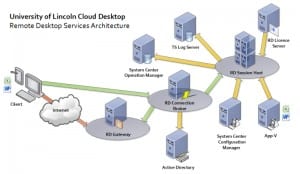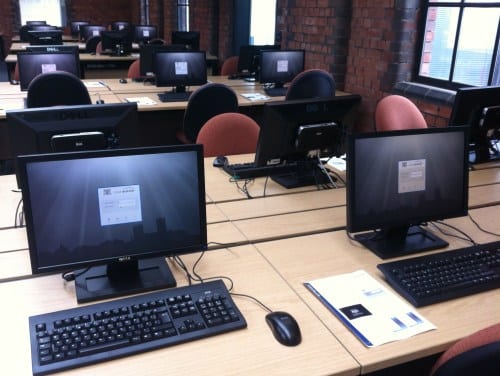As we approached go live, we realised that we needed a name for this new desktop service. It didn’t seem right just to call it “The Windows 7 Desktop”, as the anytime, anywhere, centralised approach we have taken offers so much more than the traditional name implies. Also, although the technical solution currently provides a Windows 7 experience with Office 2010, it has the flexibility to move to newer versions much easier than a traditional desktop. New versions of both Windows and Office are always on the horizon and so we want a name which also has the same flexibility as the underlying solution. The obvious choices would be things like Remote Desktop and Virtual Desktop but these terms may not be known by everyone. Then there are the technical acronyms; VDI and RDS, which are just horrible.
In the end we decided to go for, University of Lincoln Cloud Desktop, as we felt if both captured the features of the service and our aspirations for the future. Also, the cloud concept is one that many people already understand and can easily relate to. To go with the name we wanted a fresh, clean brand which embodies our new modern, streamlined desktop. I hope you like it.


